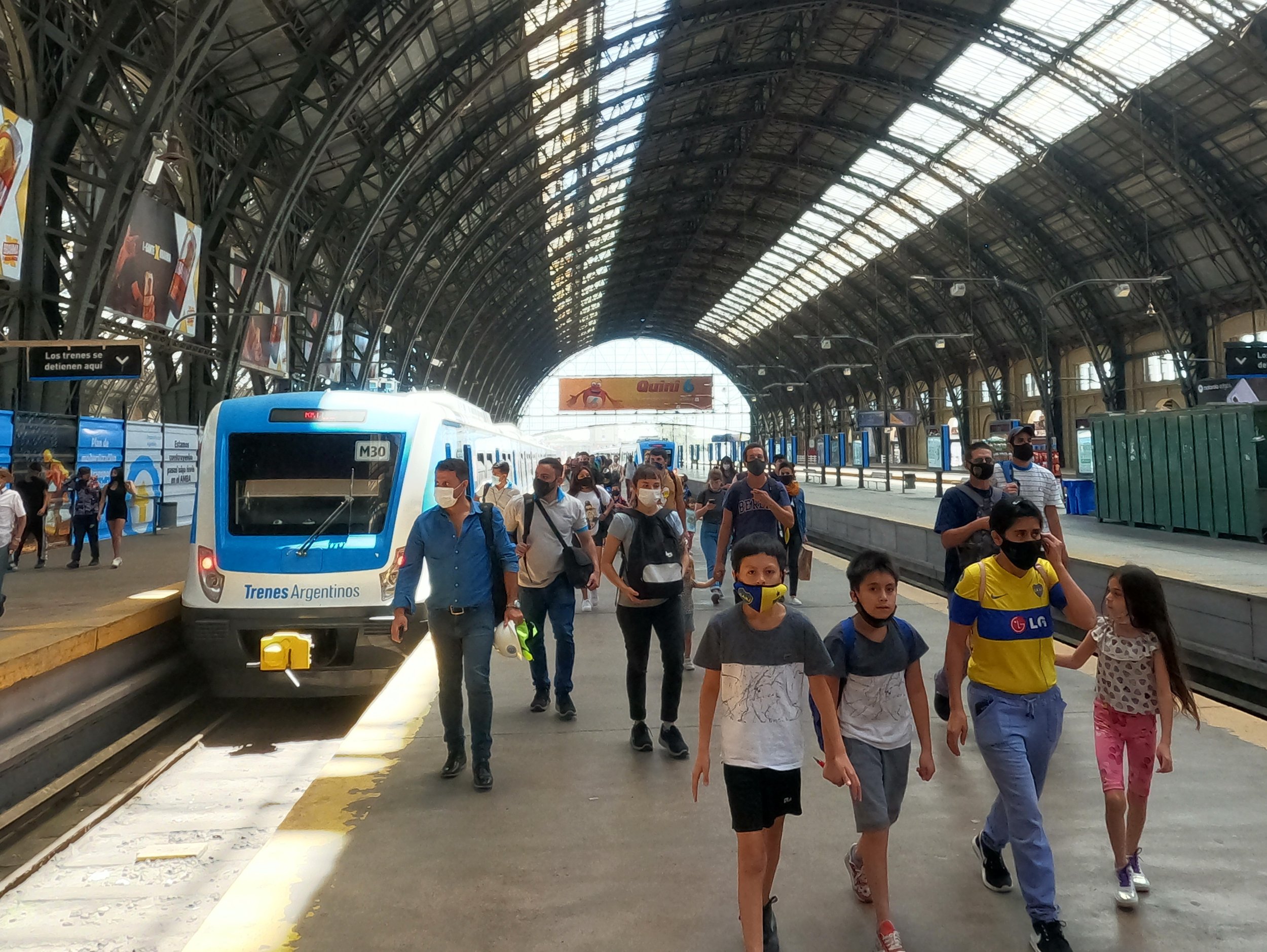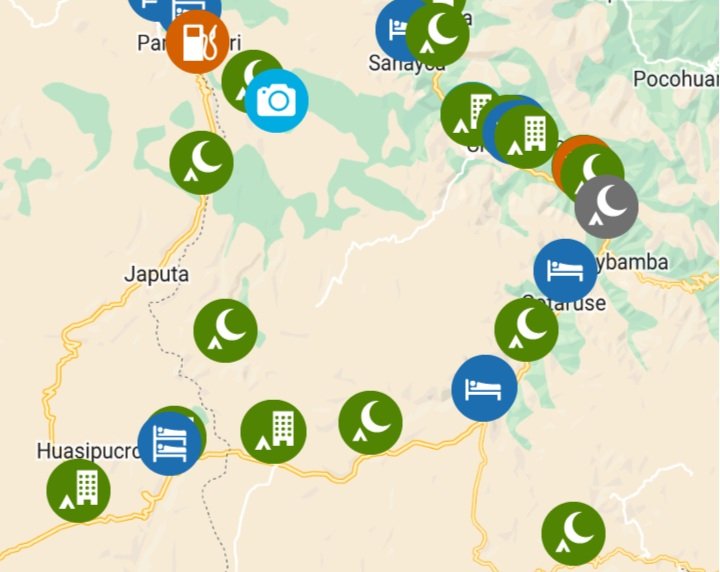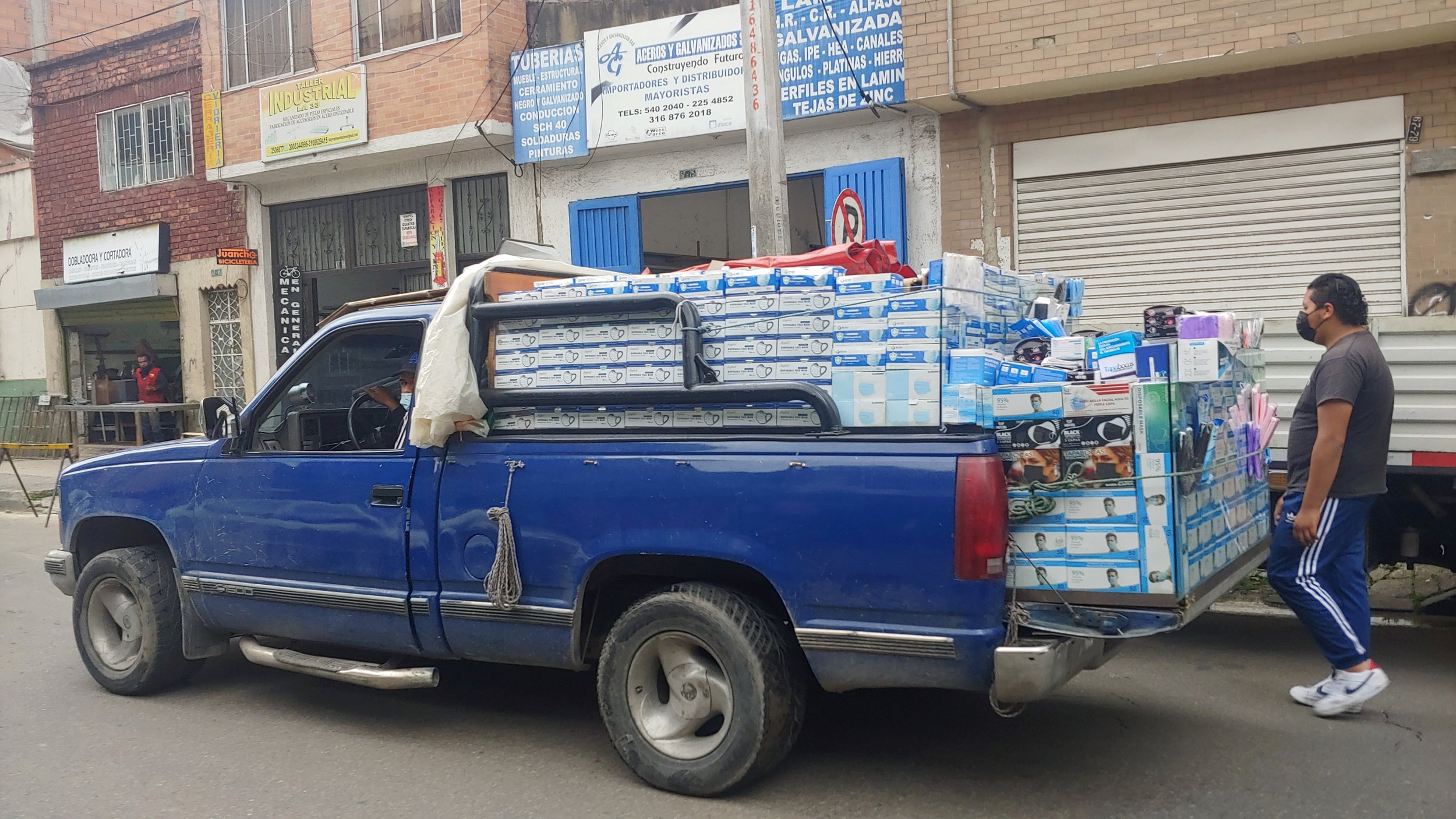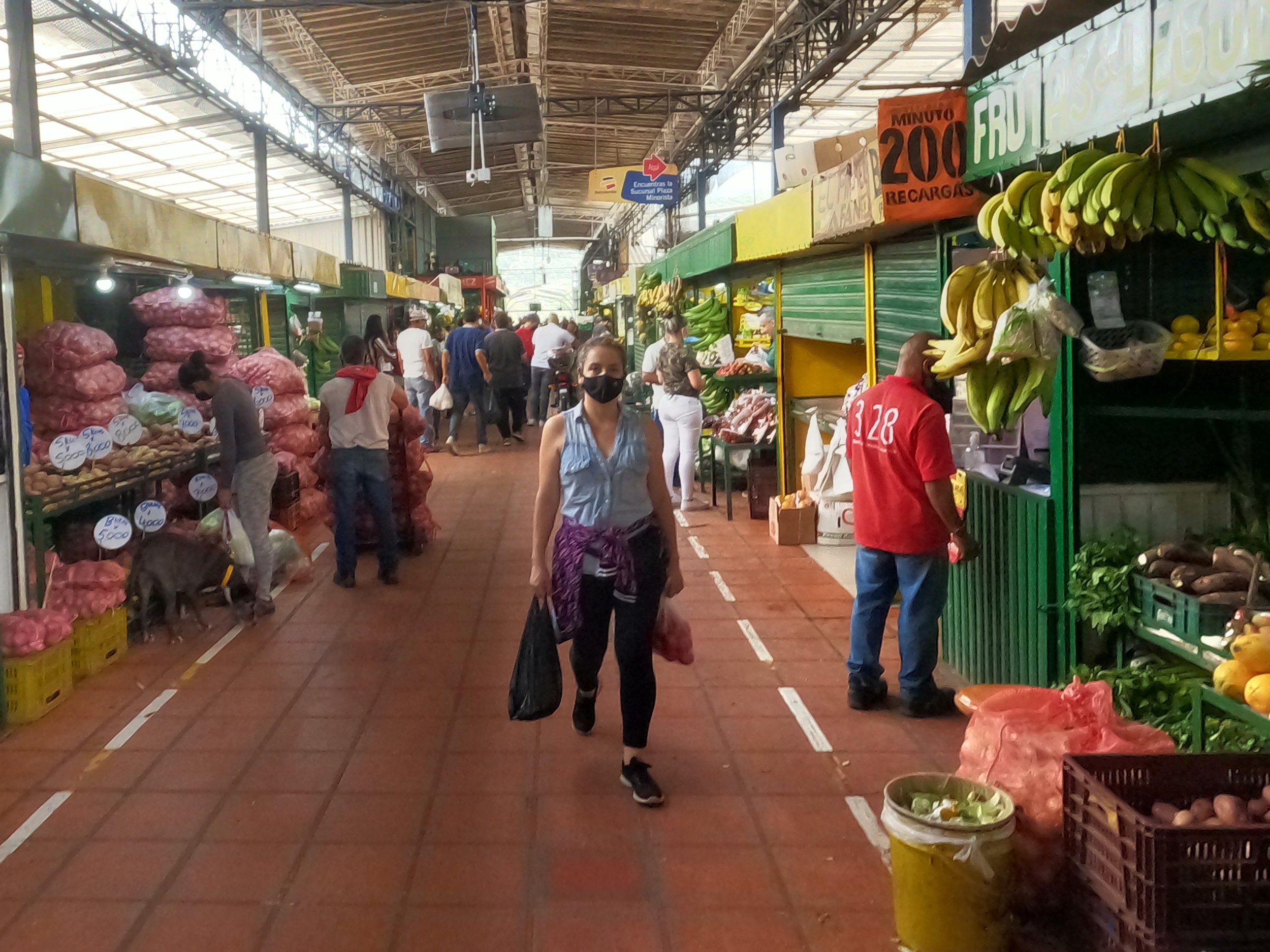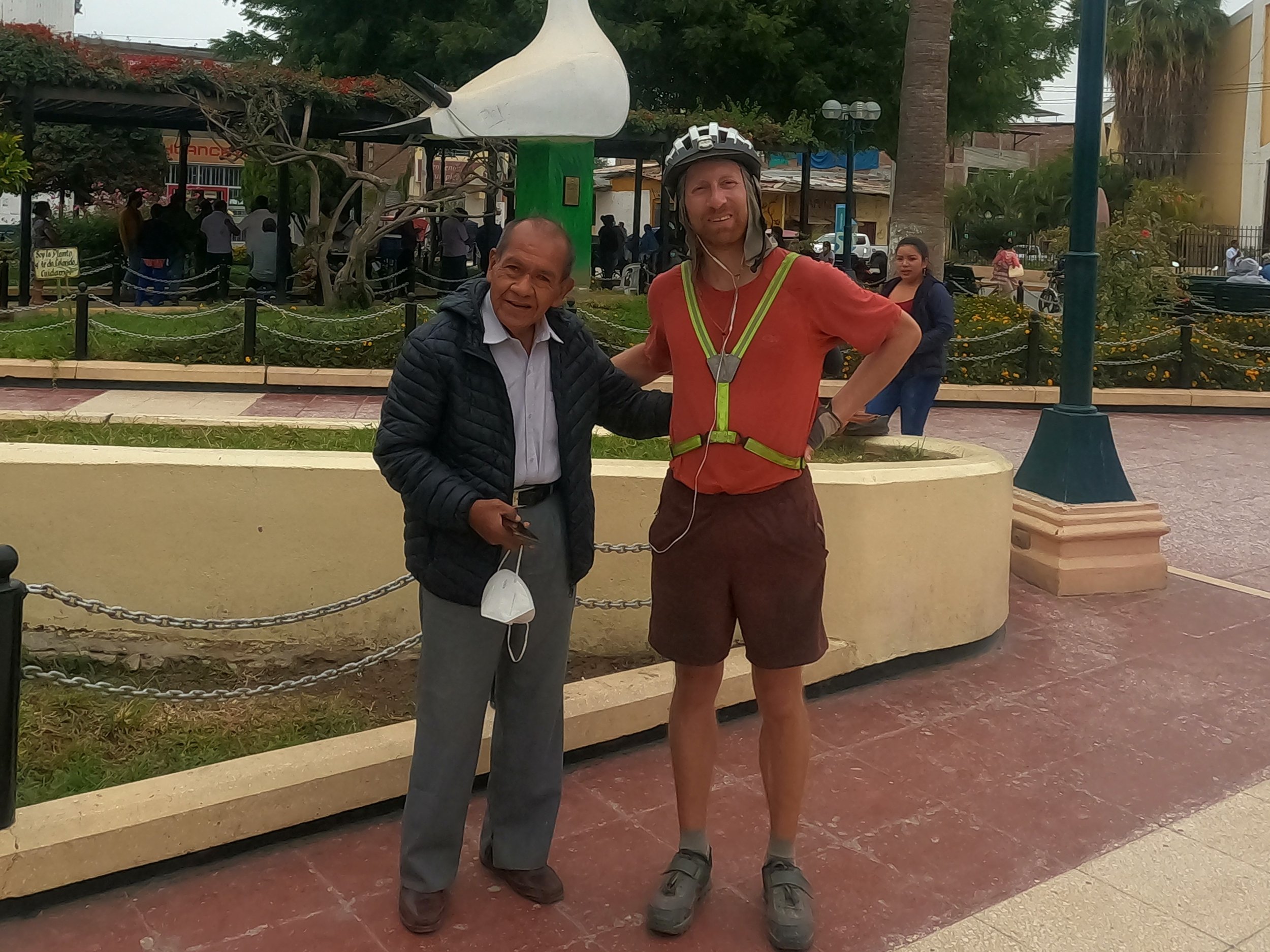Wrap Up: Trip Logistics
Now that the tour has ended, I want to share some concluding thoughts about the experience. My primary trip purpose was to learn more about urban planning in South America. I have a whole post worth of ideas on that. So, in this post, I’ll share everything that isn’t about urban planning!
How did the bike do?
The bike did great! It’s a little rusted and chipped, but that’s the sign of a well used vehicle. The moving parts required maintenance from time-to-time, and a few repairs required me to change my plans (described below). But everything here is something that I prepared for and is expected to happen. I rode a lot of rough gravel roads, carrying too much weight, and nothing failed catastrophically.
Flat Tires
One nail punctured my tire tube (and the same hole opened up again later).
The metal wire in the tire edge rusted through and broke, requiring a full tire replacement.
So, in the entire trip, I only had a classic “flat tire” on the road three times (requiring a repair or a lift). This is a huge success, thanks to a protective liner and kevlar tire.
Wheels, Gears, and Brakes
My front hub lost its ball bearings and required a wheel rebuild that took about 3 days of waiting in a small town in Patagonia.
My rear hub cracked and I rode on it wobbling for about 1000km before a wheel rebuild.
My rear rim cracked and was replaced.
One spoke broke and was replaced.
I replaced the chain about four times.
Near the end of the trip, I replaced the front and rear gears, but they lasted most of the distance.
My disc brake pads were replaced about four times.
The bike was taken in to a mechanic for a full tune-up seven times, and for small things a few more visits.
Other Parts
My kickstand had a plastic tip that broke early on. I had a metalworker make a stronger replacement. The kickstand broke twice more, and aluminum welders helped repair it.
My rear view mirror broke once.
The screws holding on the racks and fenders rattled loose a few times. One broke in the threads and I had to relocate the fender to a new location with zip ties.
The plastic chain guard has a crack and is repaired with zip ties and tape.
My panniers (bags) have a few small holes in them, repaired with tape. The plastic inserts near the rack rattle loose, so some tape helps hold them in place.
The handlebar grips are worn but still in one piece.
My bell, helmet, and first bike shoes didn’t hold up, and were replaced early on.
Where did I sleep?
In 409 days, I slept in 213 different places. Because I was often just in a place for sleep, I have trouble remembering many details on some of them!
71 Campsites (33% of the locations)
65 Hotels (some were quite basic) (31%)
57 Hostels or Hospedajes (simple rooms in small towns) (27%)
20 Homes (WarmShowers, friends, invitations) (9%)
Early in the trip, I was introduced to an app called iOverlander. It is used by a helpful community of RVs, vans, motorcycles, hikers, and bicyclists to share points on a map and details about what’s there. Here’s a screenshot, showing camping in green, hotels in blue, and other useful places. This is how I found most of the hospedajes, and some key locations for food and water.
How is my Spanish?
Before the trip, I took two introductory courses, and used Duolingo for a couple years. In the immediate month before, I joined an unlimited tutoring by video service, took another course, and attended a Spanish table. One month into the trip, I took two weeks more of classes. During the trip, I kept using Duolingo. Finally, two weeks before the end, I took a more advanced class that was still mostly review. That’s a quick summary showing that I put some time into understanding the structure of the language.
In practice, my daily routine was accomplished by using mainly travelers Spanish (food, lodging, directions, explain my trip). At times, I felt like I was moving backwards when these same conversations didn’t require new concepts. However, my ear was becoming more tuned to the language, so I needed to ask for repetition less, and was nodding along with understanding even if I couldn’t speak back what I had heard.
In a few cities, I met with local bicycle people, or stayed in homes. In these places, I had a conversation about urban planning or politics in Spanish. This was really cool, and I built up new vocabulary that I can use professionally.
A lot of the trip logistics are done on WhatsApp, in Spanish. Things like asking for a reservation, looking for bike repair shops, making plans to stay at a home. I would switch over to my Google Translate app to check if I understood things correctly, and wrote my responses correctly. At times, I had to edit it after Google!
What about Covid-19?
The global pandemic was a constant presence during the trip, although it moved through phases just like in the rest of the world. At times, it did impact my trip plans, including one major change in route that I’m now thankful for. But it also added a way for me to learn about the cultures of each country - I could observe how they were reacting to public health measures.
I never contracted the virus. Typically, the countries I was in were lower risk than the United States. I also followed the summertime. And my activity (bike touring) was inherently pretty solitary.
The first four of the eight times I crossed a border required a PCR test. In one case, I had to test and then pedal for two days, hoping the results would arrive by email and my phone would have service. It did!
My vaccines were sufficient for the remaining border crossings, and by the end even those weren’t checked. I got a booster shot in Chile.
Facemasks were very widely used for all of the countries. I started in Colombia where they were everywhere, but by the end I returned there and the masks were mostly off. Because they weren’t controversial, I saw a lot of people wearing masks casually, almost like a fashion item. Outdoor use was comically common. In some remote areas, they wouldn’t be used as much on shared van transit.
Signage about masks, hand washing, and 2 meter distance is everywhere, looks old, and isn’t coming down.
Much of everyday life is spent in open air locations.
Tourism hadn’t returned to previous levels in some places I went. There were many hotel rooms available, and I brought some needed tourism spending.
How was the food?
I ate some excellent meals on the trip, tried some new foods, and became familiar with the local differences (like all the empanada styles). However, I also had some long stretches with repeated boring foods (fried chicken, potatoes, and rice). In general, the cuisine along the Andes doesn’t use any spicy ingredients, and doesn’t have many rich flavors. But I was able to “fuel” my biking with lots of carbs. On the northern half of the continent, I got into a routine of drinking fresh fruit juices, which were amazing.
When I was camping and having packed lunches, I had typical hiking foods: oatmeal, nuts, tortillas with tuna, rice, couscous, and pasta dinners.
How was the weather?
I prepared for all kinds of weather, and saw a wide range of temperatures: below freezing at night, to incredibly hot and humid. I had waterproof bags and clothing, but only cycled in a hard rain about six times. I probably planned around rain (like take a day off, or take an early lunch) more than went through it, because I wanted to see the landscapes and enjoy myself. I used a lot of sunscreen, and discovered that it was quite expensive in a few countries.
Did I get bored?
Sometimes! Here’s a few last observations about the mentality of traveling for a year.
When it was safe to do so, I got through a number of audiobooks and podcasts.
I read a few paper books, but surprisingly few, since at night it was time to plan the next day, and fall asleep.
I had a month where I sent only one email. All month.
My cell phone got a 4G signal along most of the route, even in remote Patagonia and Tierra del Fuego. Perhaps it didn’t have service most of the day, but any town would have something. Some countries had free wifi in the town squares.
I rarely got bored with the landscapes or the towns. My distances each day were kept low because I never wanted to feel like I needed to rush past something interesting. If I were pushing for distance, the monotony of the road could have gotten old.
That’s all for now! I will come back later with a wrap up on transportation and urban planning.
